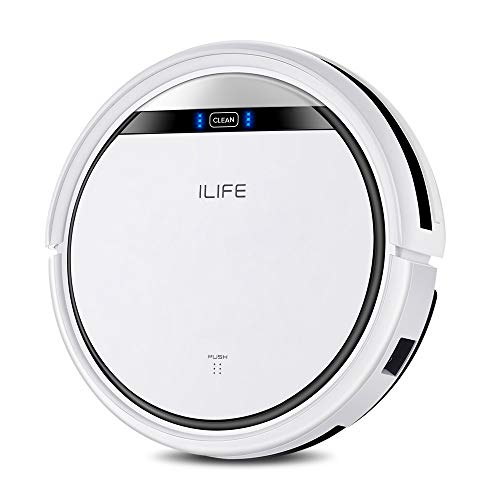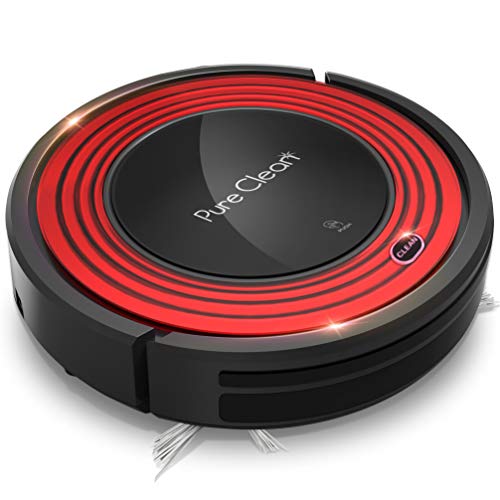What Robot Vacuum's Experts Want You To Know
페이지 정보
작성자 Roberto 작성일24-06-04 12:27 조회627회 댓글0건관련링크
본문
 Robot Vacuum Cleaner - How It Can Help You Keep Your Floors Clean
Robot Vacuum Cleaner - How It Can Help You Keep Your Floors CleanRobot vacuum's allow you to sweep, mop and vacuum without having to bend or strain. They can even be programmed to clean according to schedules using on-device controls.
They come equipped with sensors, which help them navigate around obstacles. Advanced models map rooms using cameras or lasers.
1. Easy Cleaning
A robot vacuum is an "set it and forget it" device that will keep your floors clean and reduce the amount of dust, hair and pet dander that you have to take care of on a daily basis. The ones with more advanced features can also help you schedule automated cleaning, establish zones that you want it to stay away from and keep track of its progress using the included smartphone app.
Most robot vacuums use a combination of sensors to navigate and detect obstacles within your home. Sensors that are downward-facing, which can detect the legs of chairs, coffee tables and sofas are typical however more sophisticated models may have forward-facing cameras, lasers or even lasers that enable them to map rooms and identify furniture. They then use them to instruct the robot to clean these areas and, more specifically avoid obstacles.
Even the most sophisticated robot vacuums aren't able to navigate your home with precision. They are often tripped by thresholds for doors and thick rugs, as well as stray shoelaces or cords. They can also get snagged on low furniture or under it and require human intervention to release them. It is normal for them to get caught up, since humans are not able to navigate spaces in a perfect way.
The majority of robot vacuums have an area in which they store the dirt and debris that they accumulate during their automated cleaning. Depending on the model, the compartment can either be cleaned manually or by a docking station machine. Some robots can also mop with microfibre cloths humidified by a small tank of water located at the bottom. Some do have remote controls which allows you to steer the robot around your home and change the schedule it when needed.
2. Saves Time
Robot vacuums let you automate cleaning processes, and then forget about them. This frees up time for other tasks or just relaxing. You can set the machine to clean when you are working or away on vacation.
Look for models that have smart mapping capabilities. These models use cameras, gyroscopes, or radar guided systems to create a map of your house and track their movements. These maps allow the robot to avoid repeating the same areas which makes the job more efficient.
Many robot vacuums come with dirt sensors to stop them from crashing into furniture or lingering over dirty spots. These features ensure a thorough and efficient cleaning. Some models allow you to create virtual boundaries that stop the robot from accessing certain rooms, such as a child's bedroom, through the application. Certain models have physical boundaries that you can close. Other models come with magnetic tape that can be used to mark off no-go areas.
You'll need to perform routine maintenance on your robot regardless of how advanced it is. This includes getting rid of any hair that is tangled around the brushes, emptying and washing the dust bin after each cleaning session and cleaning the cameras and sensors.
Because of their more complicated components, robot vacs may be more costly to maintain and repair than traditional barrel vacuums. They're more likely to suffer from malfunctioning sensors, battery issues and other issues that are hard or impossible to fix, which could increase the cost of ownership in the long haul. By following the recommended maintenance schedule, you can boost the performance of your robot as well as prolong its lifespan.
3. Safer Cleaning
The best Self Vacuum robot vacs feature built-in sensors to help them avoid furniture, walls and other obstacles. Many of them also have self-emptying bins and can be controlled by an app for smartphones to set cleaning schedules and create virtual maps to show the robot where it's been. Some even come with mopping capabilities and can be manually controlled to tackle hard-to-reach spots such as under beds.
They are also more efficient than standard vacuums at cleaning difficult-to-access areas like under furniture. They're not a replacement for a bucket or vacuum and mop. For a thorough job they're best suited to be used in conjunction with these other tools for cleaning.
Some of the smarter models that we test in our CHOICE small appliance lab allow mopping using a microfibre-soaked cloth that is dipped in a water tank on the base. They are also better at cleaning carpets than stick vacuums, and can be programmed to perform two or more passes to ensure that the floors are thoroughly cleaned.
Some of the most advanced robot vacuums available can map out your home with cameras or lasers. This ensures that each room is completely clean without the need to repeat rooms or miss crucial areas. However, despite these safety features the robot vacuum isn't 100% impervious to hacking. All internet-enabled gadgets are vulnerable to hacking even with the best robot mop cleaner security measures. They should only be connected to an unsecure Wi-Fi network.
All robotic cleaners must be cleaned regularly to avoid debris accumulation and reduce wear. This can be done with the use of a specific brush or tool supplied by the manufacturer. It's also a good idea to check the wheels on the left and right drive, as well as the castor wheel for mopping and Vacuuming any dirt or other objects that could become stuck and stop it from working properly.
4. Simple to operate
 Robot vacuums operate according to a set schedule, vacuum Cleaner making it easy to keep your home clean. Set it to run at least once every week and your floors will be free of dust, pet hairs, lint, and surface dirt.
Robot vacuums operate according to a set schedule, vacuum Cleaner making it easy to keep your home clean. Set it to run at least once every week and your floors will be free of dust, pet hairs, lint, and surface dirt.Most modern robot vacuums are controlled by an app, so they're simple to control from anywhere. Most models allow you to create a cleaning schedule and see a virtual map of the progress made by your robot. You can also create 'virtual wall areas' that block your robot vacuum from entering certain areas of your home. By using the app, you are able to manually steer your robot vac or choose different modes, like Auto which moves it from room to room, Spot, which focuses on a particular area and Edge which allows it to be a part of the walls of your home to clean the perimeter.
The most recent models come with mapping capabilities that work on gyro, camera or radar-guided systems. Mapping lets your robot plot the most efficient route through your home, which will improve its efficiency and reduce the number of times it needs to go back over previously-cleaned spaces. The most recent robots are able to store multiple floor plans in order to maximize efficiency. They can also return to their docks to recharge or continue cleaning the area they left the battery runs low during a cleaning session.
Most robots are less maintenance-intensive than conventional vacuums. However, you should still empty the dust container and clean it regularly. It is also important to clean the brushes on the sides and the brush, as well as the filters. By taking good care of your robot will increase its lifespan and ensure it runs at its peak.
5. Easy to maintain
The best robot vacuums aren't just intelligent, they're also low maintenance. The minimum you'll need to do is empty the bin every now and then and wipe the sensors and charging contact areas regularly with a soft, clean cloth. However, aside from these minor tasks, the majority of robots are set-and forget machines. They'll do their work without assistance and won't be distracted by objects such as shoelaces, socks or pet toys.
Robotic vacuums make use of instruments for navigation such as cameras, sensors, and lasers to collect dirt, pet hair, and other debris on hard floors like wood, tile, and laminate, as well as low-pile area carpets and rugs. Smarter robot vacuums utilize cameras, gyroscopes and radar-guided navigation systems that create and save maps of your house. They can navigate more efficiently and avoid repeating the same locations repeatedly.
Most robots pair with your smart assistants for example, Alexa, Google Assistant and Siri and you can command them to clear your home using a mobile app. And if you have multiple areas in your home that do not want your robot access, you can use the app to set virtual boundaries or 'virtual walls' that block off spaces the robot shouldn't go into.
Remember that a robot vacuum may take longer to clean your home than a standard upright. The higher-end models tend to be more expensive, and also have shorter warranties. If you can give it the time and let it do the work, a robotic vacuum will keep you from having to drag out your old vacuum cleaner on a regular schedule. It will also keep your floors looking great.
댓글목록
등록된 댓글이 없습니다.



